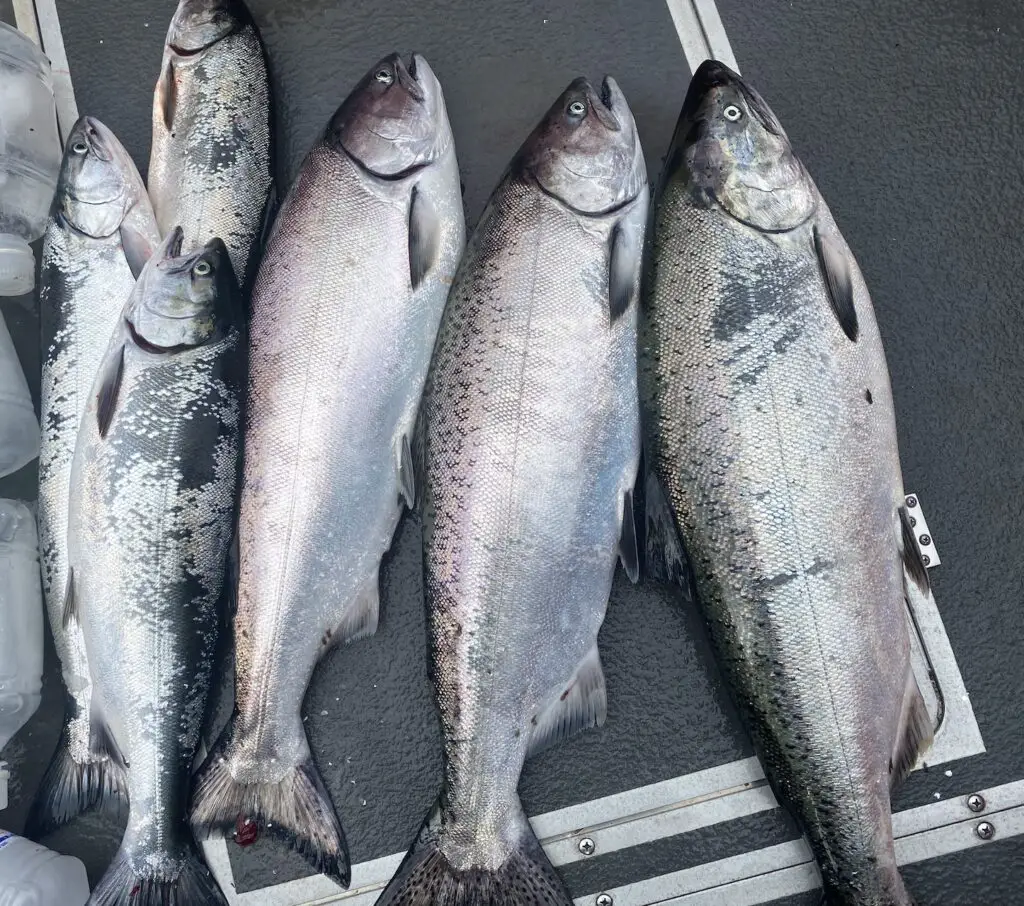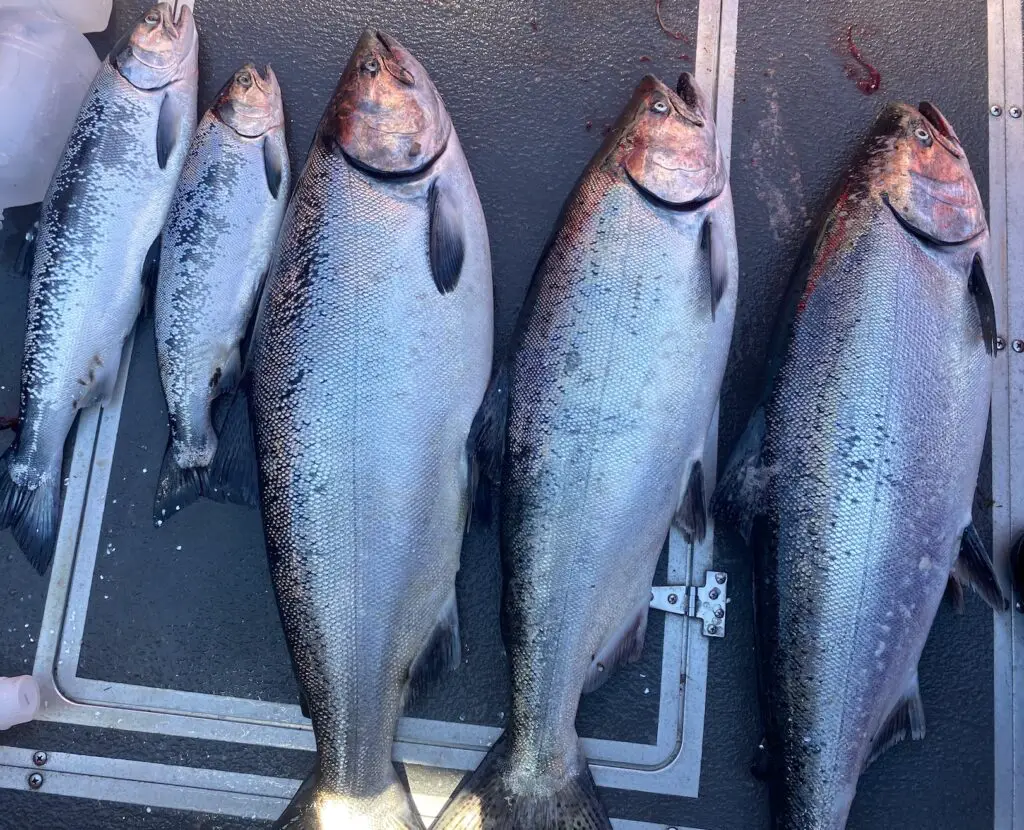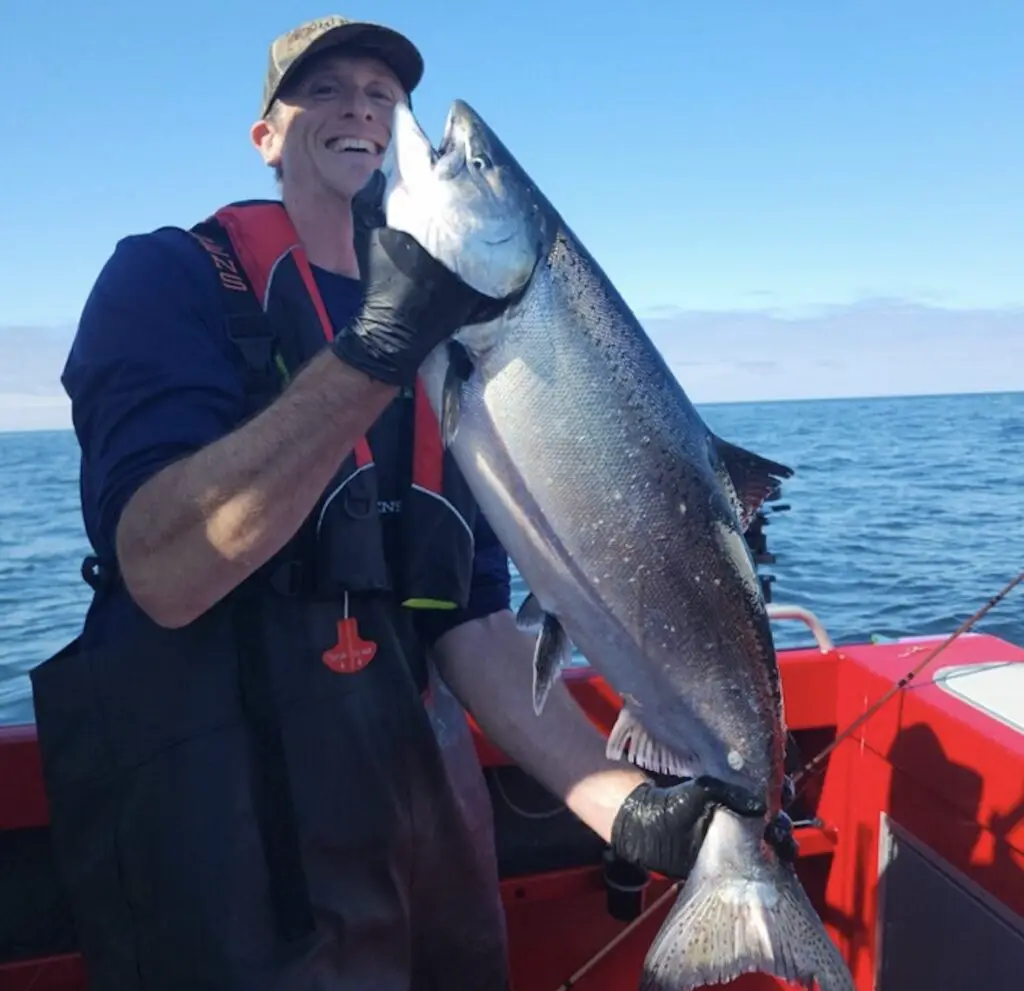
With a 2023 salmon season management approach favoring the ocean and a robust forecast of chinook and coho headed for the Columbia River, the almost perfect set of conditions have been created to produce one of the most epic salmon fishing opportunities out of Westport, WA in recent memory.
This post is all about getting you prepped to head out there and give it a go. You South Sound chinook fisherman who’s already had their season closed. You know who you are and you know you’ve been thinking about it!
There you go Kyle, opening your trap about a great fishing opportunity and inviting the unwashed masses to our favorite fishery…
I’m sorry?
Okay, now that we’ve got that out of the way, let’s get right to what you need, to be successful salmon fishing out of Westport.
One of the ways you can get started is by watching the above video, liking and subscribing to my channel on YouTube: PNW Best Life.
Being safe in the big water
Of course, the most important place to get started is by discussing marine weather safety. Especially, if you’re coming from Puget Sound and you’re wondering whether you can “cross the bar” in a smaller boat.
Or maybe you have questions like: “What is a river bar and what do they have on tap?”
Okay, maybe more serious questions like “What makes a river bar so dangerous?”
You gotta head over to the internet’s premier free source on the topic, my article titled: Marine Weather Safety.
You should at least get the basics from that article. And if you want to watch one of my older and more boring videos on going over the Westport bar in a jet sled / smallish boat, here’s that link below:
Now, you’ve been educated on bar safety, and planning around marine weather conditions, and you’ve purchased your PLB in case you find yourself in trouble 16 miles offshore.
Wait, you went through all that and still didn’t plan to purchase a Personal Locator Beacon (PLB)?
You do have to go through some steps of registering it, so don’t wait. Again, not something one commonly would need in Puget Sound. You do have the marine radio option to call for help with a fair amount of other boats in the area, but when it comes to offshore safety, there’s a reason why the charters all have these devices on their boats.
Enough about safety, let’s go fishing!
Facepalm emoji.
Okay, let’s get you rigged up for this fishery.
I should mention that PNWBestLife.com is an Amazon associate so we use affiliate links that help you navigate to the correct product, and we get a small commission, while you still pay the same price as you would by going directly to Amazon’s website and doing all the laborious searches yourself. Why is it such a pain these days to find the crap we need?
For starters, unless you plan to mostly target Coho, downriggers are pretty necessary for this fishery.

Yes, you will hook an occasional chinook on a diver in deep water, but unless you are fishing off the beach (which I’m not planning to cover here), it’s not really the way to go.
We’ve hooked our chinook consistently from 100 to 150 ft of downrigger wire in 290 to 315 ft of water. You can read all about downrigger fishing for salmon here.
I’ve primarily been fishing with 18-20 lb downrigger balls to get down efficiently and trolling about 2.2-2.7 knots “current neutral”, typical chinook trolling speeds, but generally favoring going faster.
In terms of fishing gear, I like this Okuma 10’6 herring rod
Sensitive enough really feel the fish, strong enough to drive the hook home in a big chinook and long enough to help quickly eliminate slack when downrigger fishing, which is huge.
And this Okuma line counter trolling reel
I fill the above reel with 250 yards of 50 lb braid backing and a 100 yard top-shot of 30 lb flourocarbon connected with an FG knot.
That knot had held up quite well when a big chinook introduces me to my backing!
Of course, the most interesting question is always: What are you catching them on? The easy answer is: Just about everything. However, I can share specifically what I’ve been doing and noticing about the chinook feed.
First of all, I’ve seen everything from 2″ little baitfish spilling out of their stomachs to a 7″ herring and everything in between. There’s not one “right size” of bait right now.
I’ve been doing my standard thing with Kingfisher 3.0 spoons and I really saw even more activity when I dropped an anchovy in a bait helmet down there. Wow, did they love that!

I primarily use herring aide and cookies n cream patterns on the spoons, but I know other patterns will work just fine as well.
On the flashers, again, multiple patterns have been working just fine. I usually run a blue flasher on one side and the Gibbs Bonchovy on the other side, both have glow / UV on either side to take advantage of a variety of light scenarios.
I haven’t mentioned mooching as a technique, and that’s partly because covering water has been the name of the game, which is also why I prefer to troll a bit faster.
I also don’t have anything to say about a specific spot, because the approach has been to literally motor out to the 300′ line and troll fast with the current, whichever direction it’s headed in until you find the fish.
It has been that simple!
We’ve hooked coho from right below the surface of the water and all the way down to 150′ on the downrigger wire.
The challenge has been getting through coho to get into the chinook, and to weed through wild coho to get to the marked coho you can keep.
One of the great things about the fishery this year is you can keep unmarked chinook!
When fishing with spoons, you will want to read this article about the changes I made to my spoon game to stop losing big chinook.
How long will this fishery go? Well, there’s still a large biomass of chinook headed for the Columbia River, and that fishery at the entrance usually peaks after they close it at the end of August, so I’m thinking the good fishing out of Westport will continue all the way until the quota is reached!
So get out there and get it done, it’s only like a 1.5 – 2 hour drive from the South Sound!